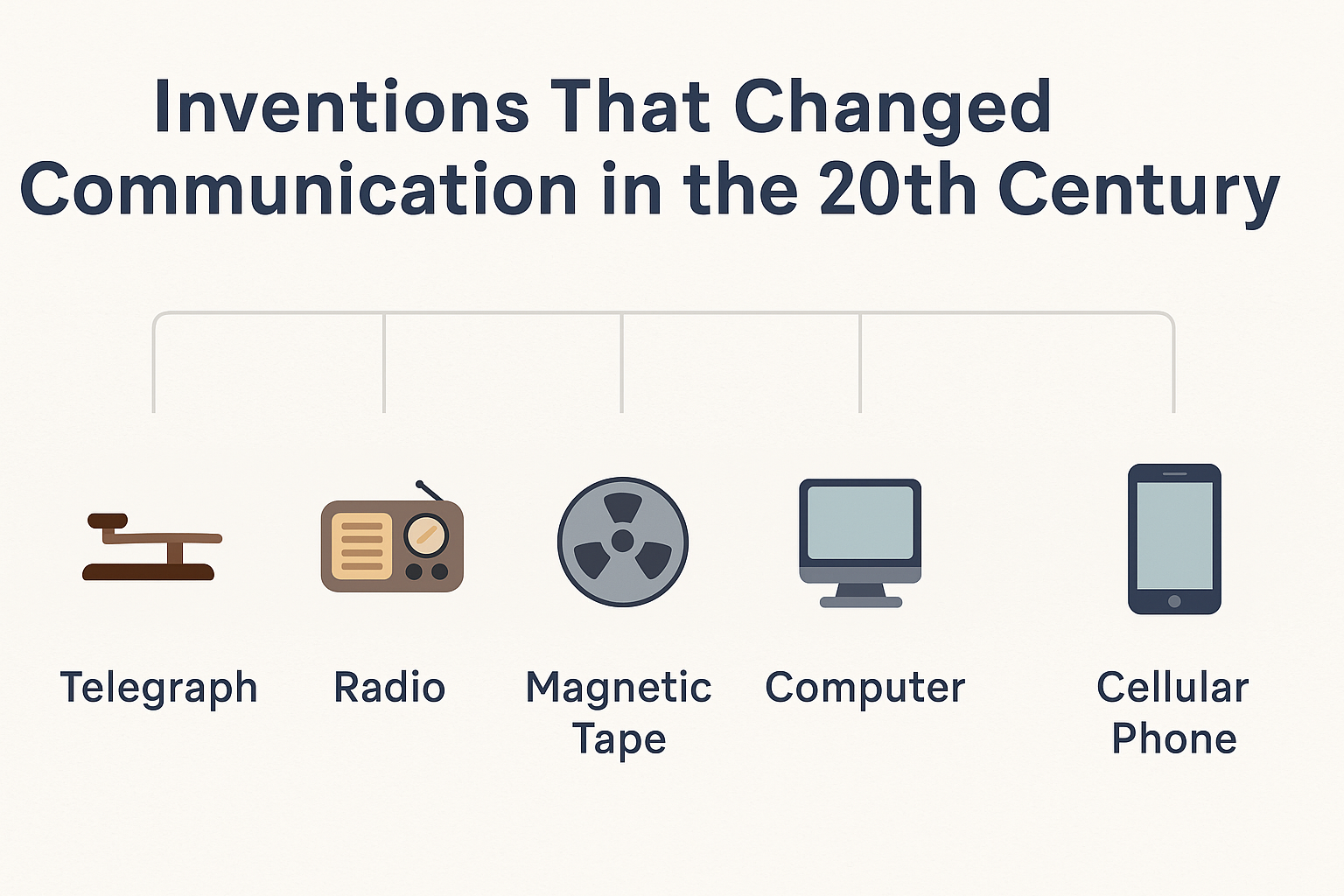he 20th century reshaped how humans connect. In the span of a hundred years, communication leapt from coded wires and family radios to pocket-sized devices capable of streaming the world. The century didn’t just speed up messages — it collapsed distance, reshaped culture, and rewrote expectations about how quickly information should move.
Here is a chronological look at the inventions that made it possible.
The Telegraph (1800s–Early 20th Century)
Though born in the 19th century, the telegraph still defined the opening decades of the 20th. For the first time in history, words could outrun ships and trains. A coded message sent over wire could travel across countries and oceans in minutes, not weeks.
By World War I, the telegraph had become the nervous system of governments, militaries, and businesses. News agencies relied on it to feed headlines around the globe. In many ways, the telegraph was the first taste of a connected world — a preview of what was to come.
Radio (1900s–1940s)
If the telegraph shrank space, radio expanded reach. By the early 20th century, households across the world were tuning in to live broadcasts. For the first time, entire nations could listen together: presidents addressed citizens directly, music traveled beyond concert halls, and breaking news arrived instantly.
Radio was not just technology; it was culture. Families gathered around the receiver at night, and advertisers learned how to sell to mass audiences. It was the first medium where communication was both personal and collective, intimate yet national.
Magnetic Tape (1920s–1960s)
Invented in Germany in the 1920s, magnetic tape brought permanence to the spoken word. Broadcasters used it to record radio programs that could be replayed, a radical shift from the fleeting nature of live performance. Musicians embraced it to create polished studio recordings, pioneering editing and layering techniques.
Tape also proved reusable — a single reel could be recorded over again, a flexibility that hinted at the digital storage to come. From cassettes to data backups, its influence stretched far beyond sound. Without magnetic tape, the leap to CDs, MP3s, and flash drives might have been delayed by decades.
Television (1940s–1960s)
By mid-century, moving images entered the home. Television combined the immediacy of radio with the emotional power of sight. Political debates, world events, and entertainment alike were broadcast into living rooms, shaping collective memory in real time.
Television redefined communication as spectacle. A leader’s tone of voice now mattered as much as their expression. News gained urgency. Culture spread faster, embedding shows, ads, and images deep into public consciousness.
The Computer (1960s–1980s)
What began as machines for military calculations and academic research became, by the latter half of the century, essential communication tools. Early networks like ARPANET in the 1960s linked research centers, but it was the rise of personal computers in the 1980s that laid the groundwork for mass adoption.
Computers turned communication into data: messages could be typed, stored, copied, and sent across digital networks. Email arrived, followed by instant messaging, and suddenly conversations that once relied on phones or paper lived on screens.
Satellites (1960s onward)
Orbiting above, satellites became the hidden infrastructure of global communication. They carried transoceanic phone calls, delivered live television events like the moon landing, and later formed part of the backbone for internet traffic.
For the first time, a single broadcast could leap continents without delay. Satellites didn’t grab the cultural spotlight like television or cell phones, but without them, global communication would have remained fractured.
The Internet (1990s)
When the internet entered public life in the 1990s, it connected the dots between computers, satellites, and networks into a single global system. Suddenly, anyone with a modem could reach anyone else with one too.
Email replaced much of postal correspondence. Chat rooms and instant messaging made real-time conversations possible across borders. By the end of the decade, websites and search engines had turned the internet into a universal library, marketplace, and meeting place.
The internet wasn’t just another invention — it was the foundation for nearly everything that would follow.
The Cellular Phone (1970s–1990s)
Cell phones debuted in the 1970s, but their size and cost kept them out of reach. The 1990s brought digital networks, smaller devices, and widespread adoption. For the first time, voices were no longer tied to homes or offices.
Mobile phones introduced new rhythms: quick calls on the move, short text messages, and eventually video calls. By century’s end, they were not only popular but essential — setting the stage for the smartphone era that would define the 21st century.
A Century That Collapsed Distance
Together, these inventions transformed communication from physical to electronic, from local to global, from stationary to mobile. The telegraph and radio carried the first sparks. Tape and television gave communication memory and vision. Computers and satellites built the infrastructure. The internet connected it all, and cell phones put it in our pockets.
The 20th century didn’t just make communication faster, it rewrote the human expectation of immediacy. What once required patience became instant. And with every leap, the question remained: does faster connection bring us closer, or does it change what “connection” means altogether?




